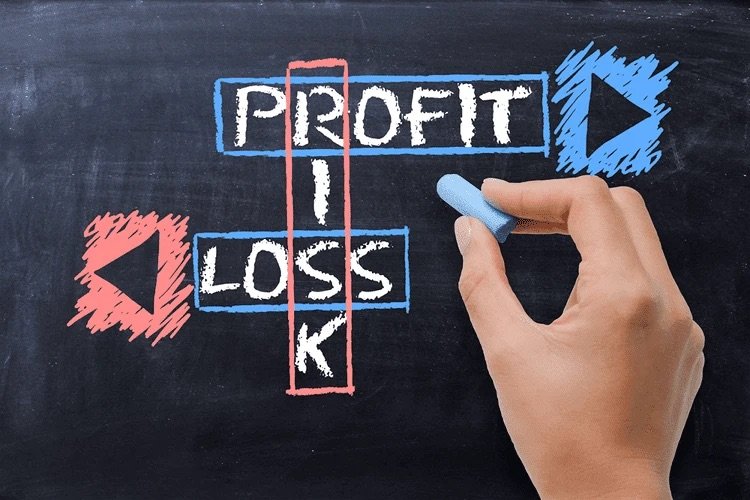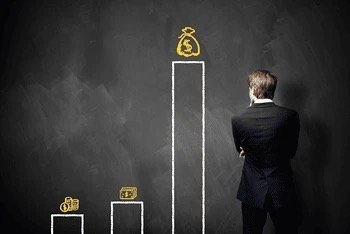
Implementing a favorable risk to reward ratio single-handedly turned my trading around in 2010.
It made me realize that having a high win rate isn’t so important after all. In fact, it’s rather meaningless.
However, most Forex traders are so preoccupied with finding a profitable strategy that they forget about the importance of a favorable risk to reward ratio.
As a result, they place more importance on a high win rate than on asymmetric returns. And I get it. I was one of those traders.
But this is a mistake. It’s far easier to achieve a favorable profit to loss ratio than it is to win 80% or 90% of the time.
More importantly, trying to get your win rate that high is unnecessary.
As George Soros once said, it’s not whether you’re right or wrong that’s important, it’s how much you make when you’re right and how much you lose when you’re wrong.
That’s the essence of a favorable risk to reward ratio. You want to make sure that any trade setup you take is worth the risk.
A great way to do that is with R-multiples. However, instead of just talking you through ratios, R-multiples and asymmetric rewards, I’m going to share four ways to maintain probable outcomes while using these techniques.
Read on to find out how I use a favorable risk to reward ratio in the Forex market to stack the odds in my favor.
R-Multiples Explained
Despite the intimidating name, the concept of R-multiples is quite simple yet highly effective.
First off, the “R” stands for risk. The number we place in front of it is our multiple.
In its most basic form, the R-multiple is nothing more than a profit to loss ratio represented as a single number.
The second point to understand is that your risk is always 1R. It doesn’t matter if you risk 1% of your account balance per trade or 5%, it’s always written as 1R.
Remember how I mentioned that the number we place in front of the R is the multiple?
If I told you that I’m about to take a 3R setup on the EURUSD, it means my potential reward is three times my risk. Keep in mind that my risk, whatever it might be, is shown as 1R.
Similarly, a 5R trade setup is one where the payoff is five times the amount risked.
Let’s take a look at a few examples.
A setup with a 100 pip stop loss and a 200 pip target is a 2R setup
A setup with a 100 pip stop loss and a 500 pip target is a 5R setup
A setup with a 50 pip stop loss and a 300 pip target is a 6R setup
You get the idea. All we’re doing is dividing the distance to the target by the amount of pips we’re risking.
To bring things full circle, let’s take a look at a few examples that involve money.
If a 1R loss is $100 and you make $200, you have a 2R profit
If a 1R loss is $100 and you make $500, you have a 5R profit
If a 1R loss is $50 and you make $300, you have a 6R profit
As you can see, the R-multiple concept is quite simple. It’s a great way to define risk because it pairs the potential loss with the payoff.
By doing this, you can ensure that the setup you’re about to take is worth the risk.
Seeking Asymmetry

There’s a common misconception among Forex traders that trading risk is one dimensional. In other words, it’s defined as 1% or 2% of your account balance and that’s it.
But those who think this way are missing the big picture.
Risk is never one dimensional. It has another facet that is often overlooked, and that’s where the concept of asymmetry really shines.
What’s the missing dimension?
The potential reward of a given setup.
Forex risk is relative, both to the size of your trading account and to the profit you stand to make with any given position.
A risk of 1% is meaningless without knowing your account size. It also tells me nothing about the profit you stand to make from risking 1% of your account.
The term asymmetry, or asymmetric, refers to the inequality between two sides. For traders, those two sides are risk and return.
An asymmetric trade is one in which the payout is significantly larger than the potential loss. I don’t know about you, but that definitely makes sense to me.
Would you rather risk the $10 in your pocket to make $30 or $5?
I think we can all agree that risking $10 to make $30 is the sensible option. It’s also the one that has worked the best for me over the years.
Written as an R-multiple, that would be 3R.
Over the years, I’ve tried dozens of trading strategies. Some of them used an asymmetric risk to return, but most were the opposite. They involved a potential loss that far outweighed the profit.
This is often referred to as negative asymmetry or a negatively skewed risk to reward ratio.
I’m sure you’ve experienced a similar situation, especially if you have used a scalping strategy.
However, starting in 2010, I made asymmetry a requirement.
At first, I used a 2R minimum. So if I was risking 100 pips, the target needed to be at least 200 pips away from my entry.
As of a couple of years ago, I increased my minimum from 2R to 3R. So when risking 100 pips, the target must be at least 300 pips away from the entry.
Doing this will, of course, decrease the number of trades I take each month. After all, there are only so many opportunities that are 3R or greater, even when trading several dozen currency pairs.
While the frequency of trades might decrease, one thing that will surely increase is the average profit per trade.
Increasing my minimum R-multiple has also helped me stay more patient, which has ultimately led to better opportunities.
Combining Asymmetry With a Probable Outcome

Whenever I mention the idea of using an asymmetric profit to loss ratio such as 2:1 or 3:1, I inevitably get pushback from some traders.
Some believe it isn’t practical. Their argument is that although your risk to reward becomes positively skewed, the odds of profiting decline.
There is some truth to that. An extreme example would be a 10R setup where the risk is 100 pips and the reward is 1,000 pips.
Compare that to a setup where the profit target is just 100 pips from your entry.
Which setup do you think stands a better chance of succeeding?
I think we can all agree that it’s the 1:1 risk to reward ratio.
However, in my opinion, traders who think this way are only viewing half of the equation.
Remember, trading isn’t about having a high win rate. You need to combine asymmetry with high probability setups if you really want to get ahead in this business.
Those who sell Forex trading robots will have you believe that a 90% win rate is required to get ahead.
What they don’t tell you is that their trading robot risks 150 pips to make 10 pips or less. That’s a bad bet any way you look at it.
So how can you have a realistic expectation of a positive result while using an asymmetric risk to reward ratio?